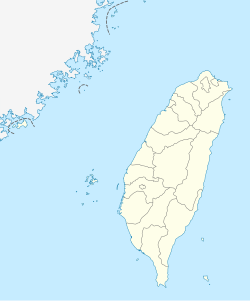Yilan City
|
Yilan 宜蘭市 |
|
|---|---|
| County-controlled city | |
| Yilan City Taiwan | |
 |
|
| Location in the Republic of China | |
| Coordinates: 24°45′N 121°45′E / 24.750°N 121.750°ECoordinates: 24°45′N 121°45′E / 24.750°N 121.750°E | |
| Country | Taiwan |
| County | Yilan County |
| Government | |
| • Mayor | Chong-Yuan Jiang (江聰淵) |
| Area | |
| • Total | 29.408 km2 (11.354 sq mi) |
| Population (December 2014) | |
| • Total | 95,885 |
| • Density | 3,300/km2 (8,400/sq mi) |
| Website | Yilan City Office |
| Yilan City | |||||||||||
| Traditional Chinese | |||||||||||
|---|---|---|---|---|---|---|---|---|---|---|---|
| Simplified Chinese | |||||||||||
|
|||||||||||
| Transcriptions | |
|---|---|
| Standard Mandarin | |
| Hanyu Pinyin | Yílán Shì |
| Southern Min | |
| Hokkien POJ | Gî-lân-chhī |
Yilan City (Chinese: 宜蘭市; pinyin: Yílán Shì; Wade–Giles: I2-lan2 Shih4) is a city and the county seat of Yilan County, Taiwan. The city lies on the north side of the Lanyang River.
The Yilan Plain in which the city is located has historically been referred to as Kapalan (Chinese: 蛤仔難; Pe̍h-ōe-jī: Kap-á-lān),Kapsulan (蛤仔蘭; Kap-chú-lân; also 甲子蘭), Komalan (噶瑪蘭; Kat-má-lán), etc. These names, as well as that of Yilan itself, were given to the sites by the Kavalan tribe of Taiwanese aborigines. Later arrivals included Han Chinese settlers during the Qing Dynasty in China (1802) and settlers from Okinawa during Taiwan's Japanese era (1895-1945).
In 1810 under Qing dynasty rule, a formal administration office was established at Wuwei (五圍) and "Komalan Subprefecture" (噶瑪蘭廳; Kat-má-lán Thiaⁿ) was at the present day location of Yilan City. Construction of the city wall was completed a year later. After a few years once the basic infrastructure was ready, the city assumed the political, economical, cultural and educational center for the Lanyang Plain. In 1878, Komalan was a large rice production area commonly called Kapsulan, and became a district called Gilan Hsien. It was one of the three new districts that constituted the new Taipeh Prefecture.
...
Wikipedia

